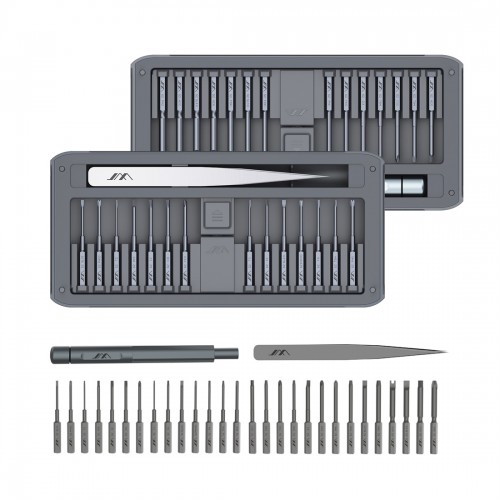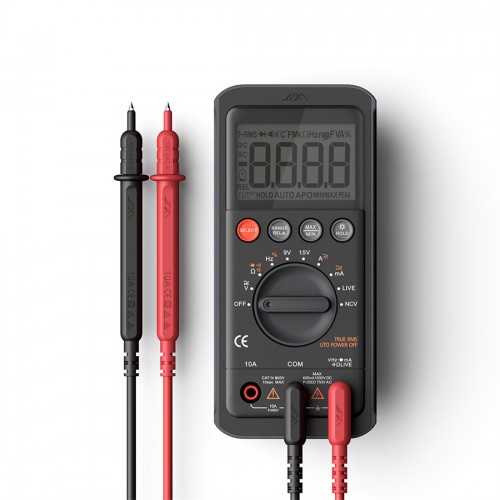scratch-resistant handheld tools for manufacturing plants for finishing work

A fully equipped tool chest is a tradesperson's prime asset for common duties like sizing wood and attaching screws with accuracy. This resource gives insight to opt for correct tools and apply them successfully.
- Start your setup by compiling vital hand tools—hammer, screwdrivers, wrenches, pliers, saws and measuring tapes.
- Learn the role and practical uses of every tool for specialized tasks.
- Hone skills with practical projects and steadily raise task difficulty.
Bear in mind that time spent learning hand tools enhances your skillset. With sound knowledge, tools become reliable extensions of ability to finish intricate projects with confidence.
Take Control of Your Tasks with Power Tools
Keen to revolutionize tasks? Dive into strong tools that marry precision and operational speed. These critical tools can upgrade your craft for both experienced workers and hobbyists. From high-torque drills to fine-detail saws, power tools supply varied functions to manage construction jobs easily.
- Unleash the potential of cordless impact drivers for effortless fastening and demolition.
- Gain skill with reciprocating saws to quickly cut wood, metal and similar materials.
- Refine woodworking by using powerful planers and jointers to get even precise surfaces.
Leverage advantages of power tools to speed project timelines and achieve notable results.
Perfect Measurements Demystified
In environments valuing finesse, the correct measuring devices determine success. From simple tapes to intricate micrometers, indispensable measuring aids ensure precise realization of plans. Whether adept artisan or fresh hobbyist, measurement mastery opens additional creative opportunities.
- Check out the range of measuring devices meant to address varied measurement needs.
- Master the particular applications and perks of each measuring tool.
- Refine abilities in accurate measurement and proper implementation.
Tool Collections for Every Job
For professionals and DIYers alike, the proper toolset is crucial to complete projects. From simple tightening to complex assembly, the correct tool collection secures efficiency and precision. When choosing a set, reflect on which projects you will do most often.
Are you after an all-in-one collection or a focused set for specific jobs? After mapping requirements, evaluate different models and brands on features, quality and cost. Read feedback from other buyers online to collect practical advice prior to choosing.
By investigating and planning, pick the perfect toolkit to handle jobs with certainty.
Hand Tool Maintenance: Keeping Your Gear in Top Shape
Maintaining proper care of hand tools matters for every woodworker or DIYer. Failing to care for tools results in dullness, breakage and poor work quality. Routine care helps tools stay in prime condition for long-term reliable use. After each task, clean tools to remove dirt and preserve performance. Store tools in moisture-free areas to stop rust and deterioration.
- Hone blades routinely with a sharpening stone or bench file.
- Grease or oil moving components with recommended lubricants to prevent wear.
- Look over handles for defects or breaks and change out as needed.

By keeping to these maintenance habits you prolong tool life and enjoy smoother project outcomes.
Workshop Essentials: Hand Tools You Need
A complete workshop becomes an inviting workspace for enthusiasts and hobbyists. While specialty tools can be useful, having a solid foundation of essential hand tools is key to tackling a wide range of projects. A must-have selection includes a reliable hammer, a versatile adjustable wrench, and a sturdy tape measure for accurate measurements. Include varied screwdriver sizes, pliers for gripping and a utility blade for cutting work. An efficient saw delivers exact cuts and a level secures alignment and evenness.
- Key Hand Tools for DIY Workspaces

Your Guide to Safe Power Tool Use
Power tools can be formidable instruments delivering exceptional power and efficiency. However, these formidable machines also require a deep understanding of safety protocols. Neglecting proper precautions can lead to serious injuries. This guide aims to demystify power tool safety, equipping you with the knowledge and practices needed to work safely.
Initiate by becoming acquainted with tools, read instructions thoroughly and learn safety elements. Always use proper PPE such as eye protection, hearing defenders and gloves. Carry out routine maintenance to keep tools functioning properly.
Bear in mind safety is the top priority in any workshop environment. Heeding these safety steps empowers you to operate power tools securely and confidently.
Selecting the Right Measuring Tools for Accuracy
In obtaining accurate measurements, the measuring tools you opt for play a critical role. A selection of measuring instruments exists, each tailored to specific purposes. Awareness of tool features helps you make better selection decisions. Weigh considerations like precision, resolution and measurement type for the right tool choice.
- For length accuracy, a tape measure or ruler is usually the go-to tool.
- When measuring angles, a protractor is the fundamental tool.
- Analog or digital calipers suit accurate small-dimension measuring.
By picking appropriate measuring tools thoughtfully you ensure reliable accurate outcomes.
Choosing The Ultimate Tool Set

The journey to pick a tool set can be invigorating and a bit daunting. With a wide array of offerings, feeling inundated is common. This inclusive guide gives information to choose the right set for your objectives.
First off, determine which project types you'll commonly work on. Are you an expert or a novice? Precisely defining aims narrows options.
- Use both hand and power tools together when suitable for optimal, efficient results Utilize both categories of tools to achieve efficient, successful project results Don't be afraid to combine blend utilize both power and hand tools for a successful productive efficient outcome
- Place importance on essential toolkit items
- A robust hammer and possible mallet or sledgehammer
- Screwdrivers, adjustable wrenches and pliers—an adaptable kit is essential
- Measuring essentials: tape or ruler
- Alignment implements: level, plumb bob and transit
Further considerations include the materials used in the construction of the tools, your budget constraints, and brand reputation. Know that buying lasting tools is advantageous in the long term.
Simple DIY: Making Tool Usage a Breeze
Tackling your initial DIY task may feel overwhelming. Yet with fitting tools and skillful knowledge, difficult tasks turn into wins. Begin with learning and getting familiar with your tools. Read guides meticulously and test out basic operations safely. Keep in mind safety is always your primary concern. Wear suitable PPE including goggles, gloves and earplugs to shield yourself.
For tool purchases, quality and robustness should guide decisions. Opt for established brands that deliver durable, long-lasting tools.
Reach out to experienced DIYers or store experts for guidance and recommendations. Seek their advice for practical tips and insights on choosing ideal tools for requirements.
- Maintain blade sharpness since sharp tools are safer and easier to use.
- Organize your tools for easy access and longevity.
- Be open to attempting new projects to grow skills
Power vs Hand Tools: How to Choose
Working on a project? Picking between power and hand tools can be a challenging decision. While heavy-duty power tools bring speed and capability, hand tools stay essential for precision and small tasks. Refer to this guide to decide the appropriate tool option for your task.
- For detailed, precise work—carving, fitting, intricate fixes—hand tools are ideal. They give superior control and tend to be more affordable and cost-effective.
- Power tools shine when you need to complete finish accomplish tasks quickly and efficiently, like cutting sawing slicing through wood, drilling boring penetrating holes, or sanding large surfaces. They can substantially cut down required time and effort.
At the end, the optimal choice depends on project needs, user skill and cost considerations. Use both hand and power tools together when suitable for optimal, efficient results.
